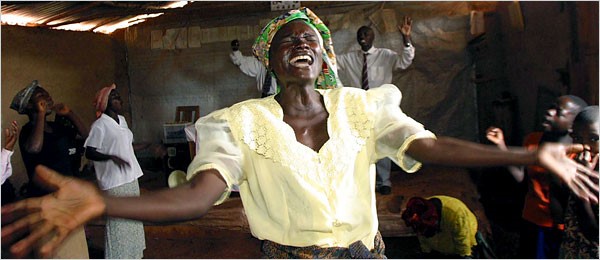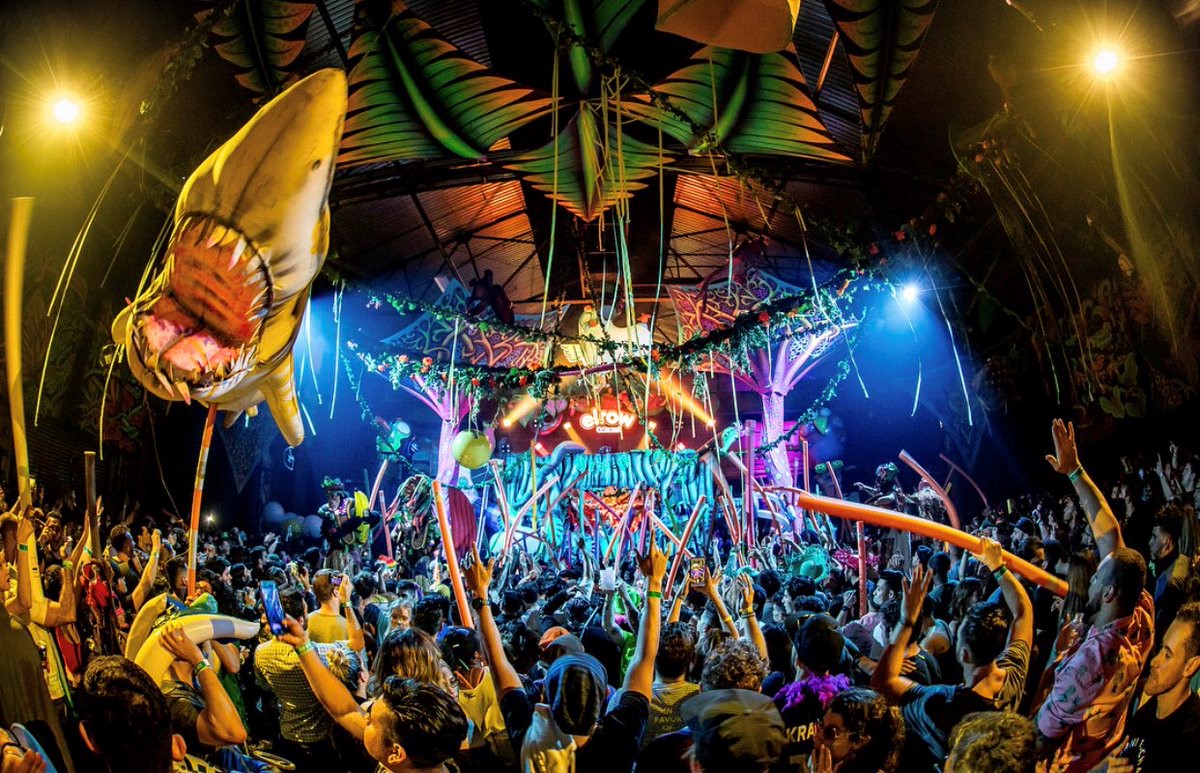 Oracle at Delphi, John Collier, 1891
Oracle at Delphi, John Collier, 1891
The Temple of Apollo at Delphi was built over a sacred spring considered to be the omphalos – the navel of the world. Since about 1400 BC, people came with questions for the Oracle at Delphi. Her answers could predict when a farmer should plant his seeds or when an empire should declare war. Legend says that the Oracle would chew on the leaves of bay laurel in order to enter into a trance that enabled her to give prophecy.
The story behind bay laurel is that a beautiful woman named Daphne, admired by Apollo, begged her father, the river god Peneus, to save her from Apollo’s relentless pursuit. Acceding to her wishes, Peneus transformed Daphne into a laurel tree. The original Oracles were said to have sprouted from a laurel tree. Although not hallucinogenic, fresh bay leaves do have a narcotic effect when eaten in large amounts, inducing a semiconscious state accompanied by a really bad headache.

Temple of Apollo at Delphi
Oracles, soothsayers, shamans and seers all employ trance in their practice. And trance has found a very popular new home in trance music, Flow, and EDM festivals. What do all of these have in common? Do they all share the same pattern of neural activity? Do they take us to the same place? The answer appears to be yes, and this suggests that trance is part of a deep human drive, or human capacity, to achieve altered states of consciousness, perhaps in order to experience a level of dissociation, i.e. temporarily zone out and escape an all too anxious world. How does it work?
Shamanic ritual
Spirit worlds, inner journeys, repetitive soundscapes, narrowed awareness of external surroundings, a path to deep knowledge, clarity and insight – these are the ingredients of shamanic trance. They have been with us for millennia and are one of the oldest and most widespread forms of healing. The universality suggests a common biological basis for achieving trance.
Current science says that the state of consciousness in trance arises from a specific reconfiguration of neural networks that allows centers of awareness to be partitioned from each other. The result is a level of conscience decoupling. It is a fact that neural networks can reorganize on the fly, in seconds, in response to an appropriate stimulus pattern.
Shamans reach into the subconscious through interactive, performative rituals employing physical, cognitive and emotional techniques. The goal being to invoke latent mental powers to heal or divine or bring good luck. Achieving an absorptive state of consciousness typically involves immersive soundscapes, drumming. The image of a chanting, wild-eyed medicine man beating a drum and dancing paints a pretty good picture of shamanic ritual. It might help to see what it looks like. Here is a Tibetan shaman in action.
Neuroimaging studies of shamans reveal a great deal about the changes that occur in brain activity and connectivity on entry into trance. In particular, the changes involve networks associated with both internally directed thought and cognitive control. At the same time, input from external sensory input becomes decoupled, suppressing external stimuli to free an internal narrative.
Trance states involve increased activity in three important neural networks; The default mode network which is involved in internal tasks like autobiographical planning, self-reference, stimulus-independent thought, daydreaming, memory recall, envisioning the future, monitoring the environment- all things we do when we are just “thinking” without any explicit goal of thinking in mind. At the same time, nodes that belong to control networks are activated that help maintain particular neural streams. This pattern of co-activation suggests that the inward-oriented cognitive state is enhanced and maintained by the control network.
In addition, nodes within the auditory pathway become less connected during trance. This implies perceptual decoupling and suppression of external stimulus patterns, including the sound of rhythmic drumming. The idea is that the auditory pathway is dampened because the sound of drumming is so predictable and repetitive that it can be largely gated out. This might apply to other sensory inputs, a feature that again biases toward internal narrative and could explain, paradoxically, why rhythmic patterns are commonly used to induce trance. Perhaps a predictable soundscape helps the shaman disengage from the external world, or maybe its just the rhythm, rather than the monotony.
In sum, trance involves coactivated default and control networks and decoupled sensory networks, a configuration that promotes an extended cognitive stream that enhances inner awareness. This is a nice formulation as far are as it goes, although I suspect there is more nuance to be discovered. For example, mediums enter into trance in order to contact and even fall under the influence of the spirits of the dead. Neuroimaging shows they experience a decrease in focus, self-awareness and consciousness. They show lower levels of activity in brain networks linked with reasoning, planning, generating language, and problem solving. There is also less activity in the left hippocampus, which is linked with emotion, and the right superior temporal gyrus, which is linked with hearing. It is as if they give themselves up to the otherworldly during trance. Spooky stuff.
This is all in line with current thinking about how cognition arises, via functional connections between large scale brain networks. The idea is that cognitive tasks are not performed by individual regions or nodes in the brain working in isolation, but by larger networks consisting of multiple brain nodes that are functionally connected and work together, perhaps only for the moment. The interesting thing is that large brain networks are fluid, they can reconfigured in seconds and break down just as fast. For example, an unexpected change of rhythm, often used to terminate the shamanic journey, or liven up an instrumental performance, prompts control networks to return to the pattern found in normal external perception, dissolving the inwardly orientated focus. From this perspective, trance involves a template for reconfiguring connections in the brain in a specific fashion. This template probably resides in all of us, an innate plan that explains why trance plays such a persistent role in human society and behavior. We all love to escape for a while, its human nature.
Speaking in tongues

Glossolalia, the word derives from glōssais lalein, a Greek phrase in the New Testament meaning “to speak in or with tongues” (Acts 2:4, 1 Corinthians 14:18). Speaking in tongues is practiced in Pentecostal and Charismatic Christian prayer groups and there is a lot written about it. It is viewed as a gift from God, an involuntary pouring out of the Holy Spirit.
One speaker says “You’re aware of your surroundings and you’re not really out of control. You’re just flowing. You’re in a realm of peace and comfort, and it’s a fantastic feeling.” This suggests a level of dissociation, a slitting off of certain mental processes from the main body of consciousness, i.e. an induced trance. Again, brain scans show a pattern of activity similar to shamanic trance and hypnosis, frontal lobe activity diminishes as the person loses their sense of purposely performing the practice. Like shamans, practitioners cede some control over their bodies and emotions while still aware of their surroundings.
Ecstatic dance

Whirling dervishes, Rumi Fest 2007
The phrase “ecstatic dance” conjures the image of Sufi whirling as practiced, in a variety of forms, by several Muslim groups . One explanation of the ritual is that dervishes seek to reach god by employing physical exertion to attain ecstatic trance. Rhythmic drumming is a crucial part. Here is an example by a master Sufi drummer.
We don’t have brain images of whirling dervishes, but blood samples give unique insight into the physiological changes that occur in ecstatic trance. Blood serum levels of cortisol, epinepherine, and norepinephrine (stress hormones) initially increase, then drop dramatically during the dance, indicating initial stress then relaxation. But the most striking change is an increase in β-endorphin. β-endorphin is an endogenous opioid neuropeptide with greater euphoric and analgesic potency than opium. The increase in concentration results in an endorphin high and is responsible for the characteristic sense of heightened well-being that accompanies trance. A similar increase occurs during exercise and is the cause of runner’s high. Other things that lead to elevated endorphins include; chocolate (cacao), sex, music, and it probably occurs at modern trance dance and EDM concerts as well, but we don’t know that for sure, yet.
Trance music

Trance music is having a big impact, especially in Europe but increasingly in the US. People are drawn to events and festivals with something like addiction. Why is that? Do EDM, trance dance and Flow events, with their immersive soundscapes and pulsating light shows, draw on the same neural pathways as shamanic trance?
The popularity suggests that trance music captures something fundamental about human experience. Something like an innate desire for inner journeys, for a beneficial level of dissociating that leads to inner knowledge, clarity and insight, and possibly for heightened human connection. People report feeling good, and that trance music transports them out of this world. Psychostimulants, like the amphetamine MDMA (Ecstasy/Molly), are pretty common at trance concerts but not universal, and for most people not the core of the experience.
If you aren’t familiar with the movement, this will serve as an introduction; Armin Only: Intense (The Final Show), live at Ziggo Dome, Amsterdam . Reminiscent of the Tibetan shaman, Yes?
There are many sub genres of trance music with names like Psychill, Deep Trance, Psybient, Goa trance, Hard Trance, Acid Trance, Psytrance -to name a few. Here is a sampler. The different forms reflect the individual tastes of the performer which gives tremendous breath and verve to the entire music scene. In general, the tempo is downbeat, 125 to 150 beats per minute and accompanied by repetitive melodious phrases, either instrumental (mostly synthesizers) or vocal. Prateek Dadheech explains the effect like this; the way trance music works is the repetitive tunes generate uniform signals in your brain. This establishes calmness and a sense of pattern that influences your state of mind. You enter a mode of serenity and your brain perceives the tunes as foreseen because of the repetition. The vocals in a trance track are typically serenading and melodious. DJs use visual effects like flashing light and laser fields coordinated with the sounds to enhance the experience.
Perhaps the most important thing about trance music events is that they are super conducive to dance, ecstatic dance. Everyone shares in the dance, bringing the audience into synchrony and community and melding everyone to the energy of the DJ. The shared experience has everything to do with the feeling of well being; it is a shared social event yet remarkable personal. These two together are transformational. The trance music world, with its huge appeal, appears to have a lot in common with chanting healers, Pentecostals, hypnosis, Dervishes, mediums, zoned-out runners, and prophesiers. Doubtless there are distinctions but they all share much the same neurobiology. What strikes me is that it points to something compelling about us.
To bring it all home, consider this– orgasm shares the neural signature of trance including, and especially, elevated β-endorphin. Food for thought.
– neuromavin

